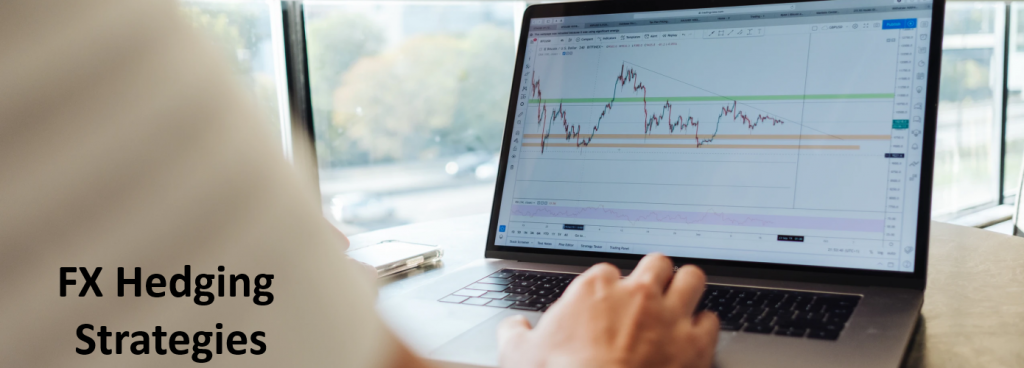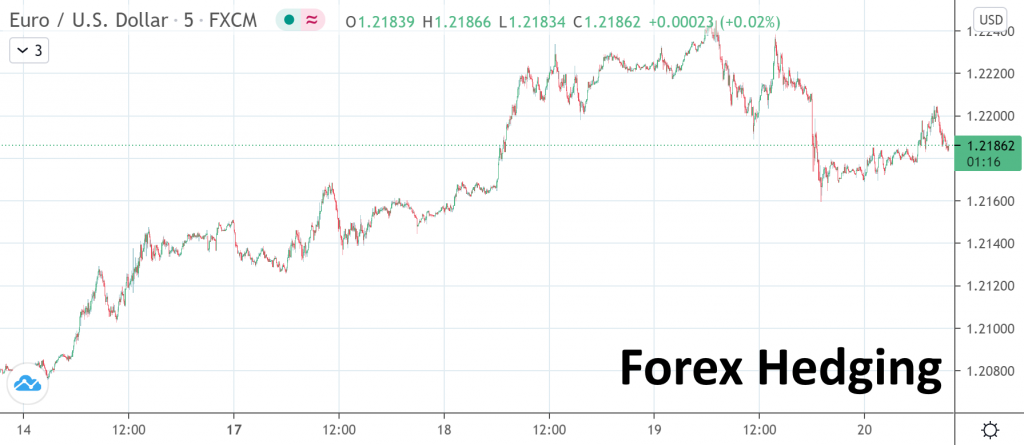In trading, hedging is a way to protect yourself against potential losses. It’s like having insurance on your trades that reduces or covers the amount when facing a loss.
We dive into detail on what hedging means in Forex trading, why traders should use hedging, and a few common strategies to get you started. We also cover any risks you could face so you can be better prepared. If you want to maximize your trading success, you should find a broker with the lowest spreads possible.
What is Hedging in Forex?
Hedging with forex is a strategy that traders use to protect their positions from the potential loss in Forex trading. This protects your position in a currency pair during volatile periods in the market.
Trader’s typically use hedging strategies when concerned about news or events that might trigger sudden currency price movements.
There are three main hedging strategies when it comes to Forex. These include simple Forex hedging, multiple currencies hedging, and Forex options hedging.
Why Hedge Forex?
Traders use hedging as a way to protect themselves against exchange rate fluctuations. While there is no guaranteed way to remove financial risk, a hedging strategy helps to manage your losses as much as possible.
Hedging involves buying or selling financial assets to offset or balance your current positions. If you think your currency pair value is about to decrease, then hedging will help reduce your short-term losses.
Currency hedging is different from hedging other markets. This is because the Forex market is more volatile than other markets.
More advanced traders generally use hedging strategies. It's important to have an in-depth understanding of the Forex market and a strong trading strategy.
Understanding Positions in Forex
Positions refer to commitments held by Forex traders in a currency pair trade. When a trade is able to incur a profit or a loss it is known as an open position.
As soon as a trade is canceled then it becomes a closed position. The profit or loss made on a position is only realized once it has been closed.
A long position is when a Forex trader expects to see an increase in the value of a currency. The trader will buy a currency pair at the current price in order to sell it later at a higher price. The margin difference between the prices will lead to a profit.
A short position is when a trader expects the value of a currency to decrease. The trader aims to make a profit by selling the currency at the current price and buying it later at a lower price.
Three Common Hedging Strategies
There are 3 popular hedging strategies you should be aware of when it comes to Forex trading.

Simple Forex Hedging Strategy
The first hedging method involves opening the opposite position on a currency pair. Traders take both a long and short position for each currency.
For example, if you have a long position on a EUR/USD currency pair, you would open a short position on the same currency pair. This is known as a perfect hedge.
This eliminates all risk associated with your trade, but it eliminates any potential profit. The net profit of a perfect is hedge is zero. You either keep your original position on the market ready for when the market trend reverses, or choose to close the position.
Multiple Currencies Hedging Strategy
This hedging strategy involves selecting two currency pairs that are positively correlated. For example, GBP/USD and EUR/USD. A trader will take out positions on both pairs in opposite directions.
Let's say you currently have a short position on EUR/USD currency pair. To hedge your USD exposure, you open a long position on GBP/USD.
If the EUR currency value falls and your long position on GBP/USD takes a loss, the profit on your EUR/USD short position would balance out your loss. Your hedge would offset any loss to your long position.
If you are successful, this is a useful way to reduce your risk. Although if the hedge is unsuccessful, then might lead to losses from multiple positions instead of only one.
Forex Options Hedging Strategy
The third most common hedging method involves using options. An options contract gives you the right to buy or sell a currency pair at a fixed price at a fixed date in the future.
For example, you decide to open a long AUD/JPY position at a current price. At the same time, you buy an options contract to sell the currency pair.
If the AUD currency decreases in value, you are able to exercise the option to sell the currency. You then close the trade, minimizing your losses.
If the market moves against you, the option will protect you. The option does this by limiting and fixing your potential loss. You are still able to profit if the market moves in your direction.
Is Hedging Legal?
Hedging in Forex trading is illegal in the US. To be clear, not all forms of hedging are banned in the US. The focus of the ban is on buying and selling the same currency pair at the same or different strike prices. The CFTC has established trading restrictions for Forex traders.
Forex hedging is legal through brokers in other parts of the world. This includes many in Australia, Europe, and Asia.
The Risks Involved in Hedging
Hedging is a useful strategy for limiting your risks, but it requires careful planning and execution. This is only recommended for experienced Forex traders.
You need to be comfortable with timing trades and market swings. If the market moves in your favor, you will make less than before the hedge. Without the necessary experience, you risk putting yourself in further financial trouble.
Hedging isn't free as there are transactional costs involved in extra trades. It takes careful oversight to calculate exposures and execute hedging.
Conclusion
In Forex, hedging is a strategy to reduce and minimize your existing exposure to different kinds of risk. Traders use hedging in Forex in order to offset the effects of sudden price movements in currencies.
There are three popular hedging strategies including simple Forex hedging, multiple currencies hedging, and Forex options hedging.
Before you start to hedge forex, it’s important that you have a thorough understanding of the Forex market. Like any other trading strategy, hedging isn't guaranteed to cover your losses completely. With this in mind, it does give you a lot of flexibility to optimize your trading.
